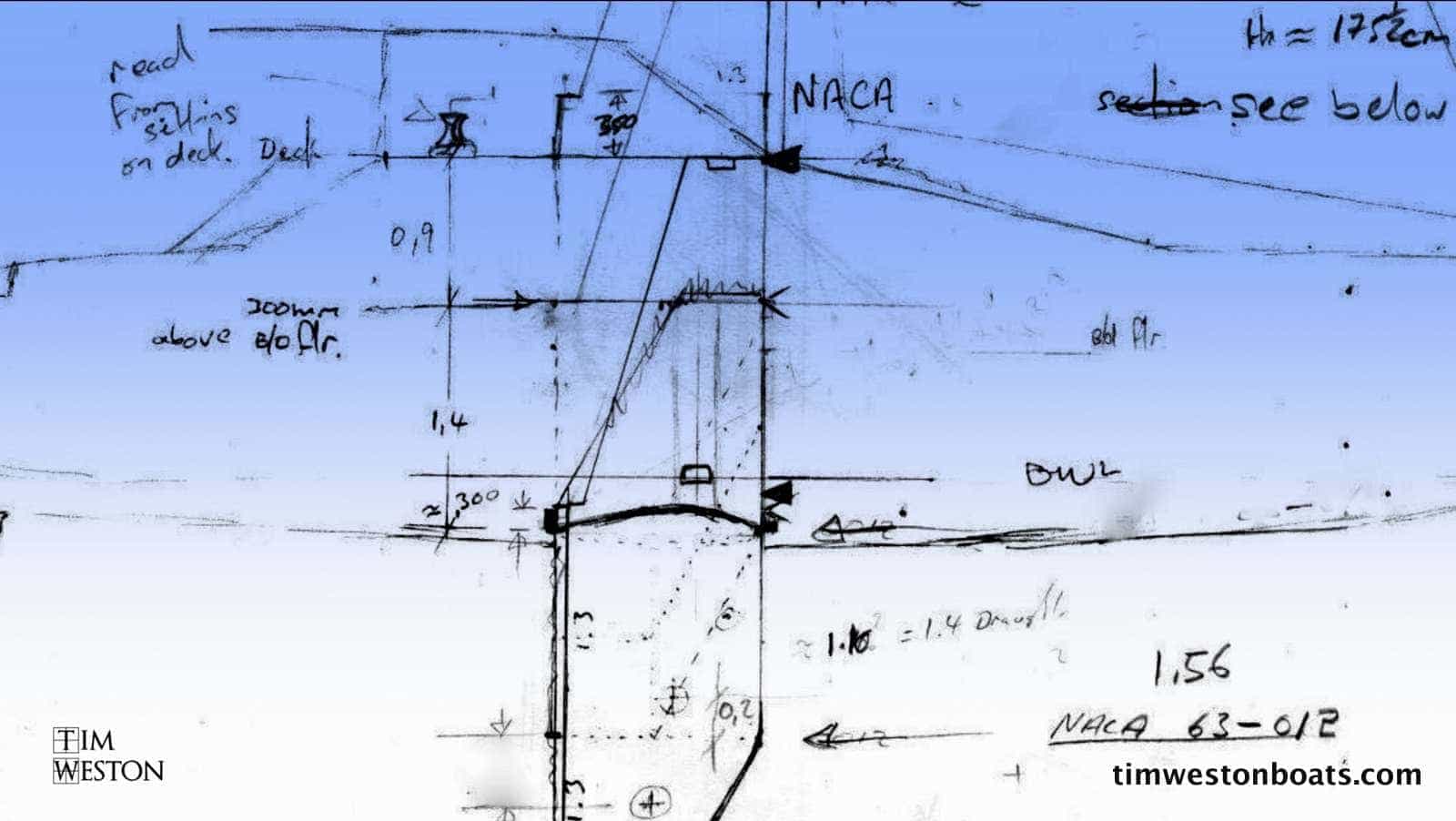
Daggerboard - the importance of in catamaran sailing
12 August 2017
The Upgrade That Transformed My Catamaran
Some changes you make to a boat are nice. Others are essential. And then there are the rare ones that transform everything—how it sails, how it handles, even how safe it feels in heavy weather.
For me, that change came in the form of a single daggerboard.
My 40ft cat, Tokyo Express, was fast on a reach and downwind, but going to wind was always a battle—until I replaced the twin daggerboards with one large one.
Suddenly, I could point as high as the racing keelboats… and beat them on speed. It didn’t just make the boat faster—it made it safer and easier to handle in rough weather.
Demystifying the Daggerboard
There’s nothing mystical about cats that makes them poor performers to windward—in fact, they’ve got some natural advantages over keel yachts. One of the best? They don’t lean over.
Yet the daggerboard is one of the most misunderstood parts of a multihull. Forums are full of debates: daggerboards vs mini-keels, one board or two, when to raise them, when to lower them. I used to wonder the same things myself when I built my first cat. And after a year in the water, I discovered just how frustrating it could be to try to go to wind in one.
That frustration sent me on a mission to figure out exactly what was going on.
My First Lessons the Hard Way
Back in the 90s, I built a 40ft catamaran called Tokyo Express—a lightweight cruiser-racer, fast on a reach and downwind. But beating to wind? Hard work. I covered miles quickly, but not in the right direction.
I started recording measurements, doing trials, and then burying myself in libraries for months, reading everything I could on sailing hydrodynamics.
The answer I kept coming back to was simple: most catamarans just don’t have enough keel area. The daggerboards are too small. Short chords don’t help either. Mini-keels? Worse still.
Why Small Boards Hurt Performance
I suspect designers often assume that because cats are faster, they can get away with smaller boards. But speed isn’t always the goal—especially when you’re clawing to windward in heavy weather.
Once your boat slows below the speed your daggerboards were designed for, lift drops, sideslip increases, and your ability to point high disappears. Even at speed, small boards won’t let you point like a well-keel’d mono.
Building My Own Solution
I left my boat at anchor, spent three months in my shed, and built one large daggerboard to replace the original two. This new board had 150% more surface area than both originals combined.
Once installed, Tokyo Express was a different boat entirely. Suddenly I could sail as hard to wind as a keel yacht—only faster.
Proof on the Racecourse
I only raced her once, in the Whitsundays in 1998. Starting 10th last out of 130 boats, with two legs hard to wind, I overtook half the fleet on the first leg—matching the pointing ability of the racing keelboats and passing all the other multihulls. I finished 20th overall, behind only the big million-dollar maxis I couldn’t quite catch.
Why the Board Matters So Much
Your rig’s power is only as good as your daggerboard’s ability to resist it. If the board stalls, your boat slides sideways, the rudders load up, steering becomes heavy, and in my case, I eventually burned out my autopilot.
I used to have to ease off the wind just to make the rudders manageable, which gave me speed but cost me pointing ability. In rough weather, that meant zig-zagging uncomfortably across the wind instead of making direct progress.
Safe as Well as Fast
After the new board went in, those problems vanished. I sailed with it for three years, including through storms in the Pacific that I’m convinced it helped me survive.
On the return from New Caledonia and Vanuatu, I could reef down, lock the boat hard to wind, and keep speed under control while still making steady progress—7 knots, pointing high, with no sideslip, even in extreme wind and slow speeds. Steering was effortless. The boat drove to wind like a tractor, and I could actually sleep.
Before, in those same conditions, I’d have been fighting the helm, sliding sideways, and getting nowhere.
The Daggerboard Is the Heart of a Multihull
You can have sleek hulls, a light build, and the best rig money can buy—but if your daggerboard isn’t right, you’re wasting potential. Racing or cruising, your ability to go to wind can make or break the boat.
If you’re not happy with your cat’s windward performance, you can do something about it. I now have plans available so you can build your own large daggerboard—the same concept I used to transform Tokyo Express.
Whether you’re building from scratch or upgrading an existing cat, replacing two small boards with one large one will change your boat forever—and free up valuable space in the hull.
See the daggerboard plans & details here →
I hope this has been helpful. Tim Weston
PS: I tell the full build story in my book “Building Tokyo Express.” My next book, coming soon, covers the five years I lived aboard and goes deep into sailing with this board, including hard-earned lessons from the Pacific. Subscribe on the website to grab it at the intro price when it launches.